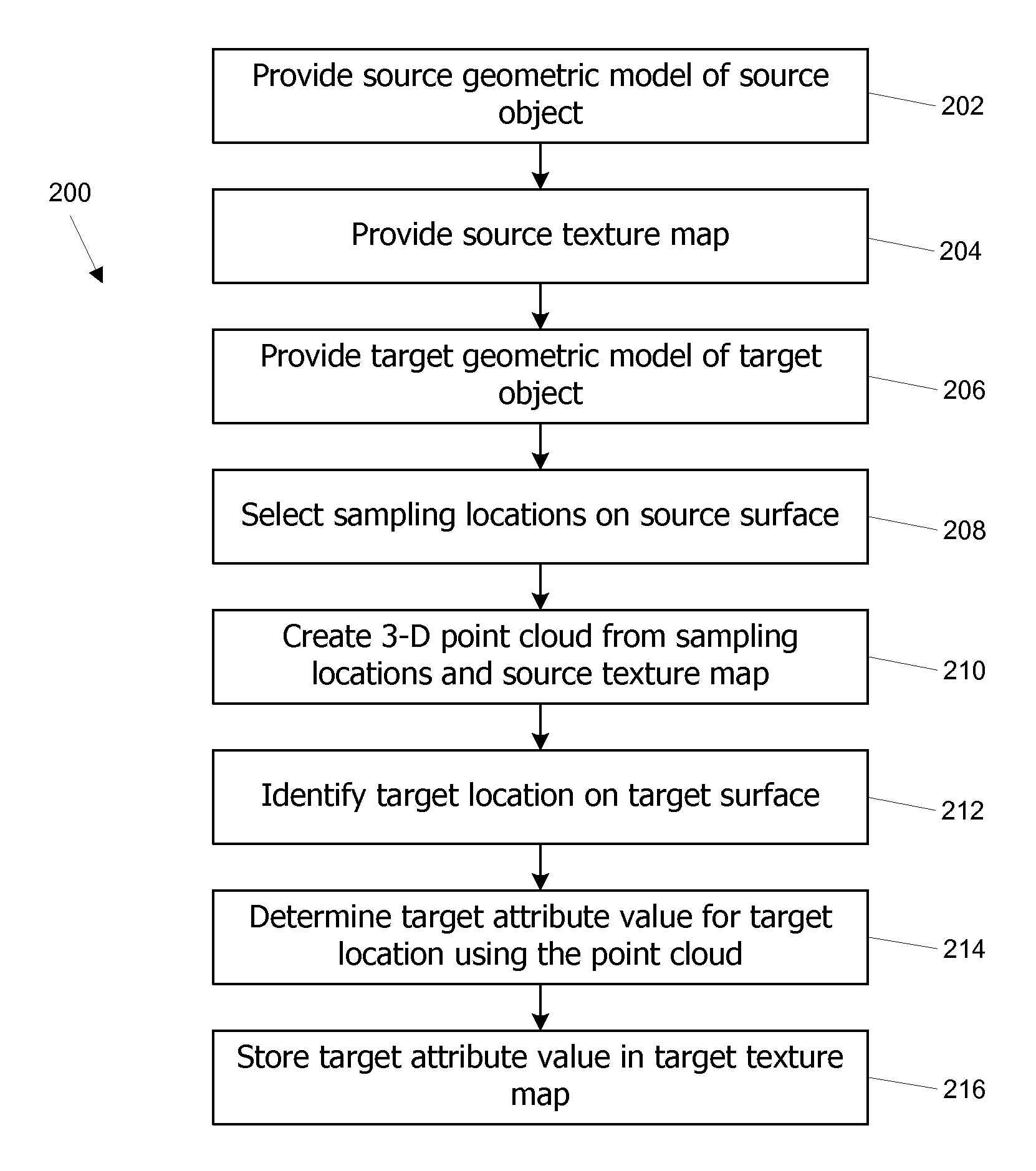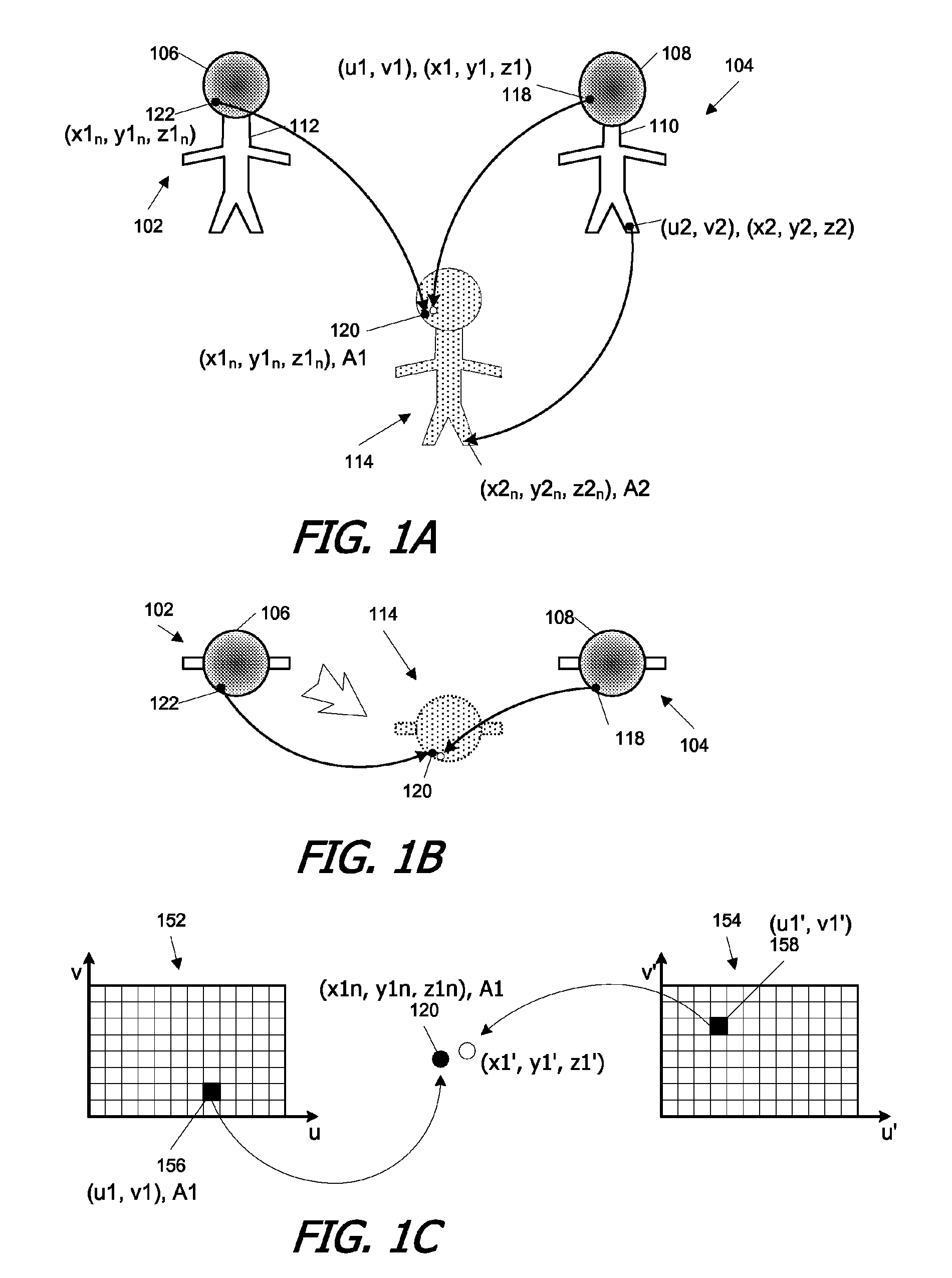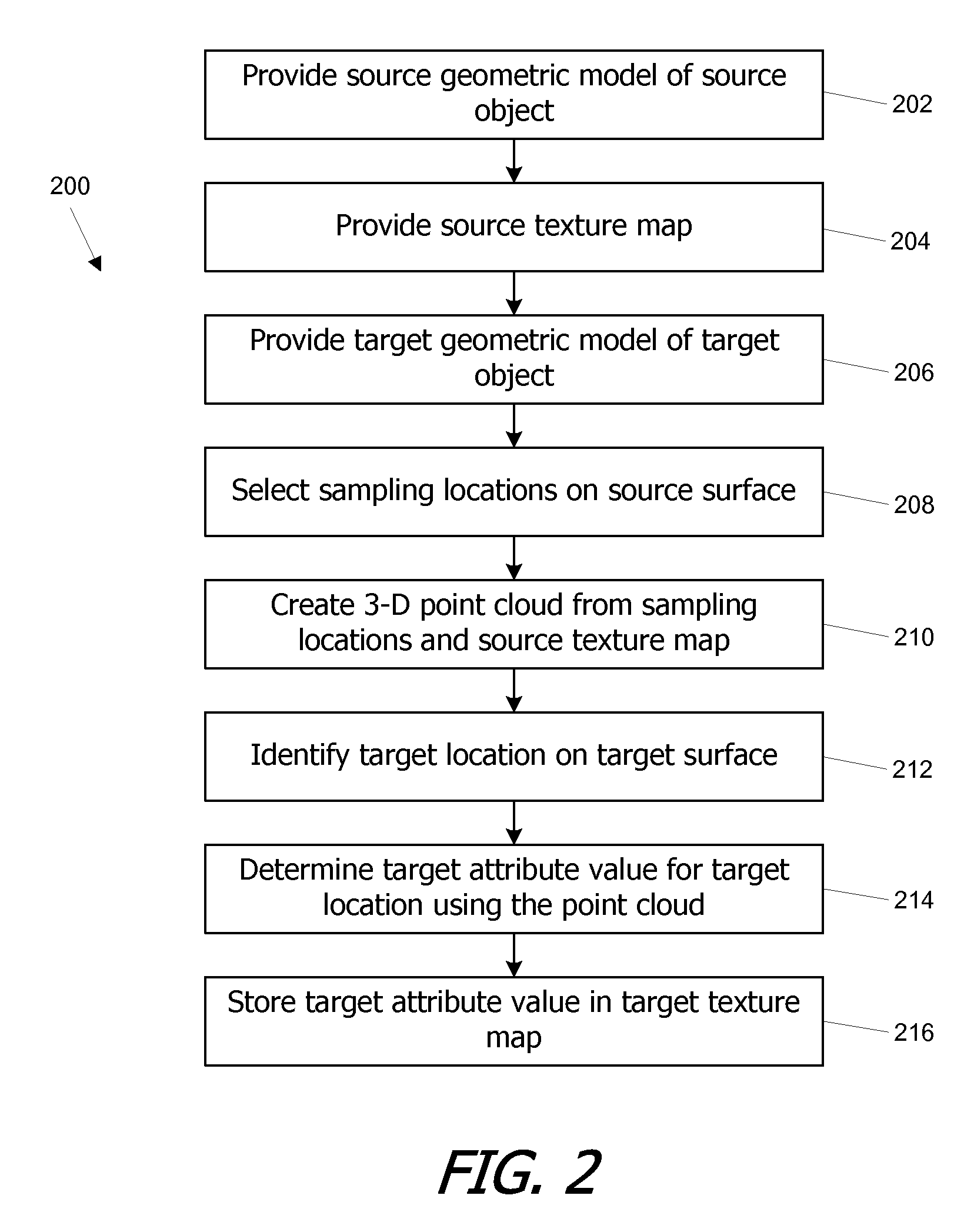Three-dimensional location-based texture transfers
a location-based texture and transfer technology, applied in the field of computer-based image generation, can solve the problems of time-consuming and laborious, large change in texture mapping, undesirable distortion,
- Summary
- Abstract
- Description
- Claims
- Application Information
AI Technical Summary
Benefits of technology
Problems solved by technology
Method used
Image
Examples
Embodiment Construction
[0019]Embodiments of the present invention provide systems and methods for transferring textures between different object models using a point cloud. In a first phase, a point cloud in 3-D space is created to represent a texture map as applied to a first, or “source,” object model. In some embodiments, the point cloud has the property that each texel of the texture map is represented by a point in the point cloud; for each texel, a corresponding location on a surface in 3-D space defined by the source object model is identified, and the point cloud point has the coordinates of the corresponding location and the attribute value of the texel. An attribute value for a target texel of a texture map associated with a second, or “target,” object model, is determined by identifying the 3-D location on a surface defined by the target object model that maps to the texture-space coordinates of the target texel and assigning an attribute value to the target texel based on the attribute value o...
PUM
 Login to View More
Login to View More Abstract
Description
Claims
Application Information
 Login to View More
Login to View More - R&D
- Intellectual Property
- Life Sciences
- Materials
- Tech Scout
- Unparalleled Data Quality
- Higher Quality Content
- 60% Fewer Hallucinations
Browse by: Latest US Patents, China's latest patents, Technical Efficacy Thesaurus, Application Domain, Technology Topic, Popular Technical Reports.
© 2025 PatSnap. All rights reserved.Legal|Privacy policy|Modern Slavery Act Transparency Statement|Sitemap|About US| Contact US: help@patsnap.com



